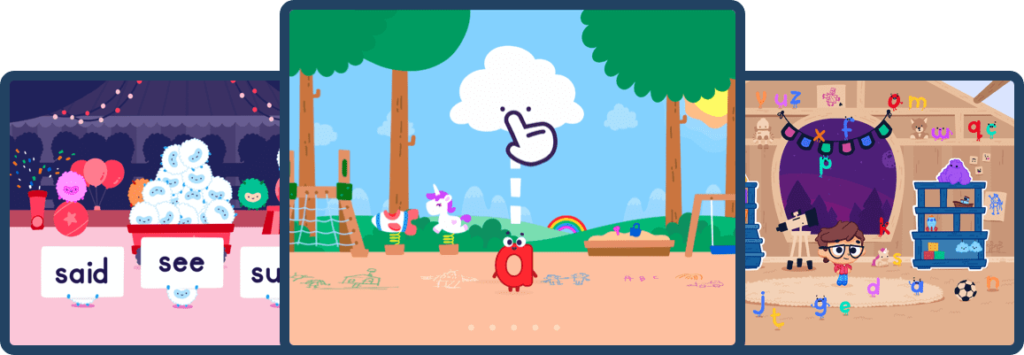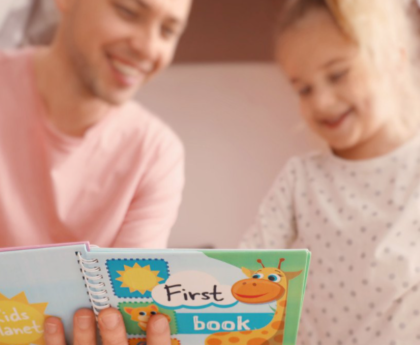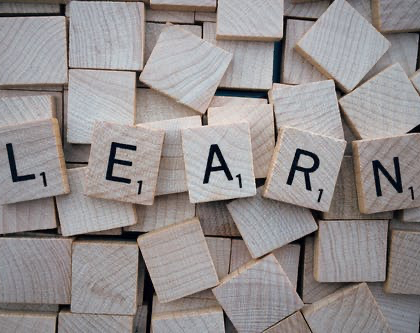Learning to read is one of the most challenging and important skills a child develops. So what can you do as a parent to help your child get a head-start?
As a parent, you are continually working to make sure you’re giving your child everything they need to be happy, healthy, and prosperous. Intuitively, you know that helping them learn to read is a big part of that. And, if you can do it even before they start school, that would be a head start you both can be proud of. But like countless parents just like you, you’re pressed for time and not sure how even to start.
The great news is that it’s not as hard as you may think—and it all starts with understanding how reading is taught.
Why Early Reading is So Critical

Learning to read is one of the most challenging and important skills a child develops. It is also the most highly correlated with success in life. Academic achievement springboards from this early milestone and continues for the rest of their lives.
Even though reading is crucial, 65% of fourth-graders do not read at a proficient level. Often called the “pivot year,” it’s during this critical year that children move from learning to read to reading to learn. If your child doesn’t have this vital foundation, a domino effect of challenges can spiral out of control very quickly. That terrifying thought might even be why you’re here.
Don’t worry. First, let’s talk about why so many children move through school unprepared. The key lies in how reading is taught in schools.
How Reading is Taught in Schools

There are two main ways schools teach children to read. One honors that all children learn differently, and the other does not. One is proven to lead to success in reading proficiency. The other does not.
The two main methods are Phonics and Whole Language.
Phonics centers on the idea that children should learn the sounds that letters make first, then how they fit together to create words.
On the other hand, Whole Language relies heavily on memorization—rooted in the idea that immersion in text helps children attach meaning naturally.
Why two?
Phonics instruction was the de facto standard for centuries. Then came the whole language method. It began with people who saw phonics lessons as rote, old-fashioned, and restrictive. They believed that freeing children and teachers from repetitive skills—like breaking words into parts—makes it easier to develop a love of reading.
In the early 1990s, whole language learning took hold in so many schools and teacher preparation programs that it became a guiding principle behind reading instruction across California’s entire state.
But the phonics folks never quit.
The battle between whole language and phonics philosophies got so heated that the U.S. Congress eventually got involved, convening a National Reading Panel to review all the research on reading.
So, which is better?
In 2000, the panel released a report. The research showed that explicitly teaching children the relationship between sounds and letters improved reading achievement. They concluded that phonics lessons help kids become better readers.
As with all types of learning, all kids are different. Experts say that while some kids will learn to read in a whole language classroom—without explicit and systematic phonics instruction—many will struggle.
If you want to understand why one method has proven to be more successful than the other, there are a few key things to keep in mind about how reading is learned in the first place.
How Reading is Learned
Decades of scientific research reveal that reading doesn’t come naturally. The human brain isn’t wired to read. So even though you may have started reading to your child—giving you precious time to bond—he or she won’t learn to read simply by looking at books or listening to adults read to them.
Children must follow clear (now scientifically proven) steps that explicitly move them progressively to connect sounds with letters.
“There is no debate at this point among scientists that reading is a skill that needs to be explicitly taught by showing children the ways that sounds and letters correspond.”
Louisa Moats: Author, Researcher, Teacher
So, with schools split on methodology, it’s no surprise that basic literacy in the US is a massive problem resulting in too many children reading far below grade level.
So if you can’t rely on school and you’re not a teacher yourself, how do you give your child the best tools and opportunity in your power?
Literacy Can Start at Home

It’s simple, really, and you’re probably already doing many things in your day-to-day life to help your child thrive.
When and how well your child learns to read may also depend on something called pre-reading engagement. In other words, you can begin setting the stage for successful literacy—even if you don’t feel qualified to teach your child to read the “right” way.
So, you can start instilling the precious gift of a love of reading right now simply by reading to your children and introducing books as part of their everyday life. But what if—like many parents—you already read books together all the time, and you’re still just not sure if it’s enough?
There’s an App for That
If you’ve looked for help before, then you know there’s an overwhelming number of games, apps, books, and YouTube videos out there to choose from. You don’t have the faintest idea where to begin, and you certainly don’t want to seem confused when you sit down to help your child gain confidence in their reading.
Don’t worry. That’s exactly why we’re building Reading.com.

That may sound like magic because all those programs you’ve seen before rely on games and activities to keep children engaged instead of teaching them to love reading. Instead, the Reading.com program lets you rely on it to guide your child beyond basic phonics, where most “babysitter” apps stop. The finished program will provide step-by-step lessons that you move through together with your child.
You don’t have to be an expert. All you need is a few minutes a day to connect with each other.
You won’t have to think about whether you’re doing it right or not. Structured lessons will cover critical knowledge and skills like:
- Familiarizing your new reader with common phonemes through sound
- Recognizing sounds and words with sight
- Letter identification to pair sight with sound
- Decoding words to build problem-solving skills
- Rhyming to deepen understanding
Want More?
We believe that every parent holds power to be the most engaging, effective teacher their child will ever have. Reading.com is here to help you unlock that power. Want to preview the delightful experience you can expect with the full program? Hungry Cloud is a fun mini-game that brings the joy of learning letter sounds to your toddler. It will be included in the whole program but is an additional activity to reinforce what you’re teaching your child in the lessons.






